An Eikonic achievement – and bearer of the weight of its 35-year franchise history
With over 100 titles since 1987, across almost every conceivable mode of gaming, the Final Fantasy series becomes more oxymoronic with every new release.
Announced during the PlayStation 5’s launch campaign in 2020, and treated by Sony with almost as much passion as one of its first-party studio games, the latest mainline entry into the series landed exclusively on the PS5 on 22nd June 2023.
Featuring fast-paced action combat, the story follows Clive Rosfield on a path to revenge, following a tragic set of events that take his family and kingdom from him. He becomes embroiled in a quest to liberate the world from its dependence on the magical Mothercrystals drinking the land dry of life. His journey sees him cross paths with the Dominants – those chosen as hosts for the power of the Eikons, who can make or break empires.
With elements looking forward as often as they look back, it is almost impossible, and borderline unfair, to talk about the sixteenth mainline entry in Square-Enix’s flagship series without considering the wider context for its release, and what might have been expected of it.
Now that the dust has settled nearly half a year later, with fans looking forward to imminent story-based DLC and a promised PC release, as well as Square-Enix’s next triple-A title in Final Fantasy VII Rebirth, where does XVI actually land amongst a sea of titles competing for success?
Legacy of the Crystals
For nearly two decades, the Final Fantasy community has struggled to answer the question of, “what makes a Final Fantasy?” in a way other brands are not often challenged to do so. If someone asked you to describe a Mario game, you might reasonably conjure images of a joyful, primary colour-clad platformer with plenty of collectibles and challenge. With a comparable 40 years and 200 titles behind it, Mario has hopped genres and styles more than most, but everyone knows what a Mario game looks like. You will probably be able to do the same for games like Call of Duty, or Mortal Kombat.
If you attempt the same exercise for Final Fantasy, you’d be forgiven for thinking about a turn-based battle system and travelling around a world map in an airship – but spin-offs and re-releases aside, Final Fantasy hasn’t truly looked like that for over 20 years. If that number caught you by surprise, it might be a good time to adjust your lumbar support for the rest of this article.
Over the years, the series has tried to keep things fresh, with the aim of regularly trying to bring something new the series while maintaining a common identity. Final Fantasy IV introduced the now widely-adopted Active Time Battle (ATB) system. Final Fantasy VII was the first to take the series 3D, and Final Fantasy X led the way in delivering an RPG almost entirely with voice acting. Despite having brand new worlds, characters, music and themes, every title ‘felt’ like a Final Fantasy. Quite what that was is hard to point at – though Final Fantasy IX gave it a good go, as it was a game constructed almost entirely from loving references to the past, while clearly looking forward with gameplay mechanics and a loveable unique art style.
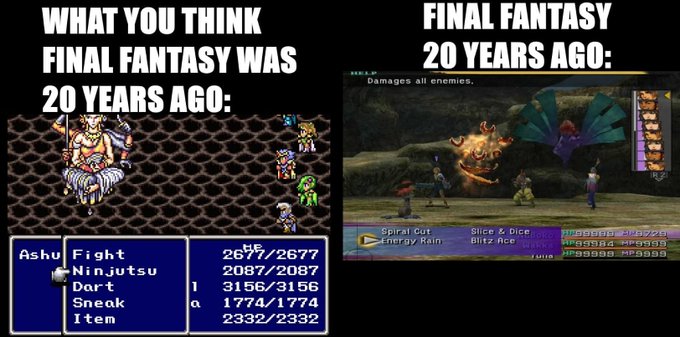
After the departure of key development figures in the series, such as Hironobu Sakaguchi, the ‘Father of Final Fantasy’, and Nobuo Uematsu, whose soundtracks are still regularly toured around the world, Square-Enix decided to follow more modern trends, stepping away from its turn-based roots – and things started to feel different. Final Fantasy XI provided the first multiplayer and online experience in the series; XII brought real-time elements and a semi-open world with AI party management; and XIII saw introduced dynamic, on-the-fly job switching, with a female protagonist leading her own full trilogy of games. XV launched as a massive multimedia experience and was itself reworked from Square-Enix legend Tetsuya Nomura’s ambitious vision for a cancelled Final Fantasy XIII spin-off, with a tumultuous development history worthy of its own spotlight.
Despite all enjoying reasonable critical and commercial success, fans have been polarised with each new release – as some yearn for the so-called ‘Golden Age’ of Final Fantasy, while others push for the series to move in new directions. Even developers don’t agree on what really makes a Final Fantasy.
In one of gaming’s biggest comeback stories following a poorly-received version 1.0, Final Fantasy XIV, the second MMO in the series, quite literally destroyed its own world and rebuilt itself from the ground up. The rebooted iteration is unrecognisable from the initial release – further proof that Final Fantasy has not been afraid of reinvention, even with the same game.
Under the stewardship of its new Director, Naoki Yoshida, lovingly nicknamed Yoshi-P by fans, XIV has gone on to become Square-Enix’s most profitable property, and enjoys continued praise from its dedicated community. Its latest expansion released in 2021 – and was so popular that Square-Enix temporarily suspended all new digital sales of the game to expand server capacity to meet demand. It was no wonder, then, that Yoshi-P was entrusted to be the Producer for Final Fantasy XVI, with the unenviable task of getting things back on track by breaking an apparent slump in the mainline’s recent history – while maintaining the ethos of bringing innovation to a veteran series.
Keeping Up with the Tomes
It was clear from early footage that XVI aimed to tell a gritty story in a medieval setting, in many ways returning the series to its roots. It didn’t take long for comparisons with Game of Thrones to surface, with the developers even leaning into this during some of the media cycles.
Broadly, it manages to achieve this aim – warring empires, hours of political jousting, a rich backstory of history and culture, and a large cast of memorable characters. It even netted the first ‘M’ rating in the mainline titles. Final Fantasy has never shied away from creating a vast, fleshed-out world with mature themes, but there is a clear attempt to provide a more grown-up experience for fans who have also grown up with the series.
To help keep up with ever-changing set of personal, global, and political situations, the uniquely useful ‘Active Time Lore’ system allows players to pause using the touchpad in any scene and learn about any characters, locations or events currently on screen or being referenced. The information provided is dynamic, so the summary presented to you is consistent with any new information provided up to that point. Too many large RPGs rely on retention of potentially throwaway comments, with lots of interchangeable side characters to understand the narrative – and there is always a difficult balance to strike between spoon-feeding the player exposition, and assuming you will scour the in-game journals to stay informed. Even for someone like me, who assimilated every morsel of information in the run up to release, this was invaluable in keeping up – and it’s a feature that should become industry-standard for any story-based RPGs, if developers have a crumb of sense.
Standing in for the fearsome dragons in Game of Thrones are the Eikons – this entry’s evolution of ‘Summons’. Known by various names across their history, Summons are instantly recognisable to anyone who has picked up any given Final Fantasy in the last 30 years or so. The series is always at its best when the plot leans more heavily into the Summons – think of the plight of the Espers in VI; the destruction of Alexandria in IX; and Yuna’s bond with her Aeons during her pilgrimage in X. XVI is no different, and puts the Eikons front and centre in a way not seen before in the series.
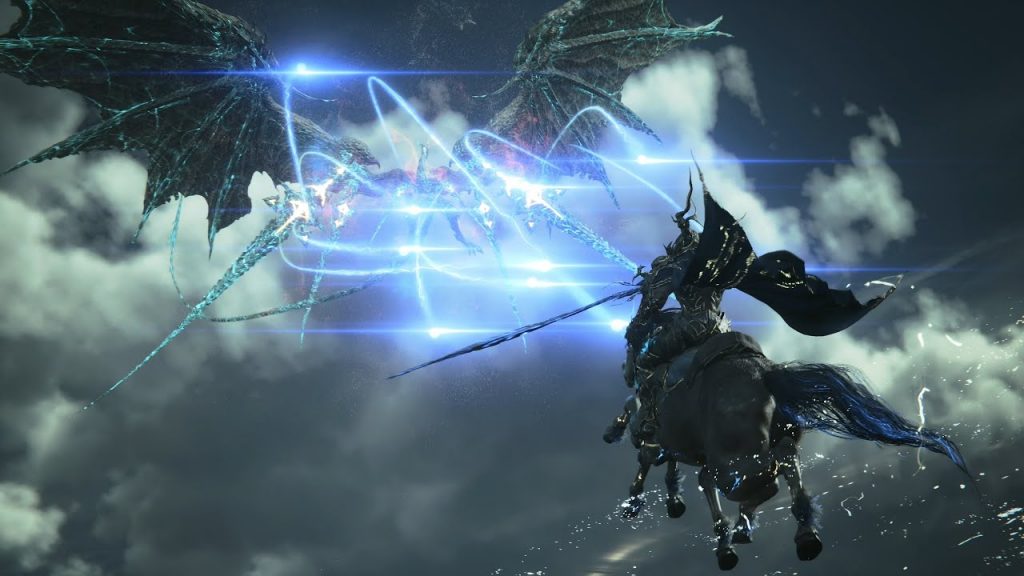
The Dominants harbouring the Eikons’ power are treated very differently in each kingdom. In some cases, they are enslaved and treated as nothing more than a sub-human weapon to command. In others, the Dominants are powerful political figures or rulers. They are a not-so-subtle allegory for what we understand about nuclear deterrents in our world – unleashing them is mutually-assured destruction, but their existence creates a palpable tension and dependence on their power. Each of the Dominants and their Eikons have plenty of spotlight and exploration of their motivations, making them some of the most spectacular features in gaming to date. Disappointingly, however, the majority of the more interesting footage was made available in trailers and demos prior to release – and while there were plenty of unforgettable surprises, there weren’t a lot of ‘Eikon clashes’ we hadn’t already seen in marketing campaigns.
The story features two glaring DLC-shaped holes in Clive’s life. The first takes Clive from age 15 to 28, and covers a period in his life immediately after tragically losing his family and kingdom up to the time he starts encountering the Dominants. We know he was enslaved, persecuted, and turned into an agent of an enemy empire, all the while wrestling with deepening feelings of betrayal and revenge. Though this period in his life is referenced, we know little about what actually occurred. The second time-skip covers a 5 year period. It’s suggested Clive and his companions spent this time regrouping and gathering intelligence on the antagonist of the moment, but it is hard to imagine nothing worth exploring occurred in this time.
We still do not know what the two future DLC instalments intend to cover, and these periods in an otherwise impeccably woven narrative are screaming for some further development – as does an exploration of why the fleetingly-referenced Eikon, “Leviathan the Lost”, does not seem to exist in the game’s present. Although such long periods of Clive’s life are withheld in a game with an otherwise complete story, the choice to follow Clive’s journey over a much longer period of his life pays dividends in deepening our understanding of his character. We are given more than enough lore and development in the base game, so it never feels like content was withheld for the sake of future expansions – but future DLC could well fill in these gaps and give us more gratuitously gorgeous scenes with the Eikons clashing once again.
My only criticism of Clive’s story across the entire game relates to an early plot point, in which Clive blames an unknown Dominant for the tragedy that befalls him – swearing bloody vengeance, and setting a fairly dark mood for the early portions of the game. It is hard to describe the resolution without spoilers here, so beware.
Clive is eventually confronted with the idea that the figure he has been chasing his whole life does not exist, and he is forced to wrestle with personal guilt and shame for his own actions. It does take a few scenes for Clive to work through this revelation, but it is put to bed rather quickly, and just blatantly never mentioned again.
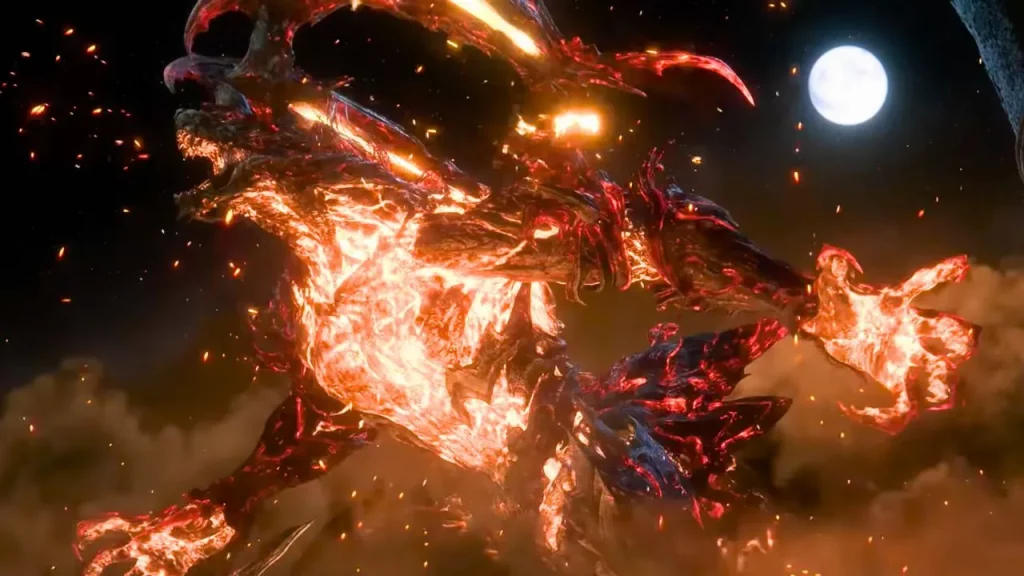
Clive’s development doesn’t stop there, however, and there is plenty to sink your teeth into with Clive and other characters – but it did feel odd to see something that drove and shaped Clive’s entire adult life being reconciled in a couple of cutscenes, and I think we needed to see him process the complexity of his emotions more gradually. Otherwise, we do see him grow and evolve over time, as do the people around him – and the game does well to balance small human moments with potentially cosmos-spanning, larger-than-life events, with a satisfying and dramatic conclusion.
Finding Its Voice
With themes firmly grounded in western fantasy, the team focused on bringing authenticity to their direction. Localisation Director, Michael-Christopher Koji Fox, described an ‘English first’ approach to writing the story and recording voice lines. The strategy was arguably at odds the company’s President, Yosuke Matsuda, previously stating his desire for Japanese studios to avoid making ‘Western’ games, and a revelation from Yoshi-P that the term ‘JRPG’ is borderline offensive. What makes a JRPG versus a Western RPG is a debate for another post – but XVI does feel more like a game developed by a big studio in the west, rather than a game you typically expect to come from Japan, and its tone and style never suffers from inconsistency or a mixed vision.
Speaking of smooth tone and style, Final Fantasy found an incredible brand ambassador in the aptly-named actor Ben Starr, who voices the lead character. His performance has rightfully earned him several nominations for Best Performance this awards season, including a win at the Golden Joystick Awards, and his passion for Final Fantasy shines through in every public appearance. I had a chance to meet him at ‘Final Symphony’ in Birmingham before XVI released, where he talked at length about the series with everyone who found him in the foyer. The game follows Clive over three periods in his life – in his teens, twenties, and thirties – and at each step over the roughly 40 to 50-hour campaign, Starr delivers the development in, bringing him to life, and he has since proven himself to be an incredibly thoughtful and insightful voice in the gaming industry.

Other standout performances include Nina Yndis as the first act’s main antagonist, Benedikta Harman, and the buttery-smooth purrs of Game of Thrones’ alumni Ralph Ineson, who might just have managed to become everyone’s favourite ‘Cid’ in the franchise history. In particular, Christopher York brought to life one of the best side characters we’ve had in a long time – the adorable and reliable Geordie, Gav. As a Brit, one of the more notable voice acting accomplishments in XVI was the inclusion of a variety of genuine regional British dialects like Gav – though, as a Scot, I remain only truly represented by Cait Sith…
On representation, XVI was notable for several reasons. Some reviews raised problems with ongoing portrayal of women in video games being developed only in service of the men around them. Final Fantasy has also traditionally lagged behind in representing minority ethnicities, and the distinct lack of colour anywhere in the game drew some grey clouds when the developers were challenged on why everyone was white. A visible rainbow shone through after launch, however, as a relatively major character’s gay relationship left no room for misunderstanding. Far from being tokenistic, this formed a key part of the character’s development, and Square-Enix was committed enough to this content that the game was consequently banned in Saudi Arabia for ‘refusal to modify the content to suit the region’. I suspect Square-Enix won’t be sponsoring the next Pride parade – but, as a queer gamer who has been reading between the lines of other characters over the years (coughAURONcough), it was nice to take some of the guesswork out of my favourite franchise for a change.
Fights! Camera! Action!
Combat in XVI takes a big swing for the series. Although Final Fantasy games have gradually moved away from purely turn-based battles, and dabbled increasingly in real-time elements, this is the first in the series with full action combat. Combat Director and Devil May Cry’s Ryota Suzuki considers the unique battle system he helped create in XVI to be his personal masterpiece. Square-Enix clearly shared his confidence by putting just as much focus into developing the combat as they did with the story – and it largely pays off. Combat is flashy, cinematic, and satisfying – and mastery of the different elements is rewarded with some challenging, fast-paced action.
Clive is able to acquire powers of new Eikons as the story dictates, and there are 38 abilities in total to choose from. Clive can equip three core Eikons in battle, each with access to two chosen abilities on cooldowns, plus one innate ‘Eikon Feat’ – for example, equipping Titan will always give access to his enormously helpful Titanic Block ability. Eventually Clive can customise his two chosen abilities in any combination – meaning you could equip abilities from Shiva and Odin in Titan’s slots. Any combination of abilities would certainly be viable, and there is enough variety to suit any individual playstyle.
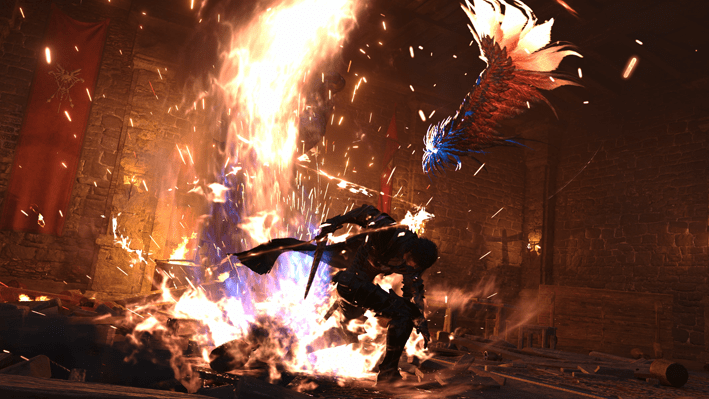
The decision to limit Clive’s chosen abilities to square and triangle was, frankly, bizarre, as it took the total number of abilities you could choose from in battle to only nine out of 38. Allowing up to 16 abilities with the face buttons would have required some rebalancing of cooldowns and damage, but I still see no reason why this was so limited in a game where its flagship feature was using the Eikon’s powers in battle – though what we were given was still ultimately rather satisfying and fun, and all abilities felt purposeful and fine-tuned.
Although you could increase the power of these abilities, I did find that there was little incentive to play around with different combinations once I found the style that suited me – I forced myself to try out some of the obviously weaker abilities just to vary my combat situations; something I may not have felt the need for if I had access to a wider range of abilities in all battles.
The real USP of XVI was its utterly spectacular Eikon battles. In cinematics and gameplay, these moments were some of the most jaw-dropping events I have ever seen in gaming, and a masterclass in how powerful the PS5 can be. While playing for the first time, I was completely blown away by the presentation, feel, and scale of these battles. If you can imagine (or remember!) how it felt to watch Godzilla and King Kong fight for the first time, XVI managed to tap into the same grandiosity.

Although the presence of some ‘quick time events’ led some to feel that battles favoured cinematography over gameplay, these were not so common that they broke the immersion, and only usually occurred where it made sense. For the most part, players had full control of Clive, with depth to these Eikonic clashes increasing in line with Clive’s mastery over his powers across the story.
One of the battles with another Eikon around two-thirds into the game remains one of the most epic battles in a game I have ever experienced – so much so that even the final boss struggled to top it, and had to bring some of those elements back in to match the impression. These are experiences I won’t soon forget.
Get By with Very Little Help from Your Friends
In another dramatic shift from the series’ legacy, Clive is the only playable character throughout the game. Various supporting characters do make up semi-regular ‘party members’, but can only be considered guest characters at best, similar to how Vossler or Reddas functioned in XII’s original releases – though, notably, this was updated to give more player choice in later releases.
Without spoiling any story, there are plenty of instances where party members are temporary, and they would certainly never be able to have access to Clive’s kit, so there is narrative justification for not giving party members any progression. Still, many will reasonably call for patches or DLC to make some of the supporting cast playable. It would not be revealing too much to say that Clive’s companions include some Dominants, and there is significant demand to be able to play as some of them, even if they had a limited abilities or progression.
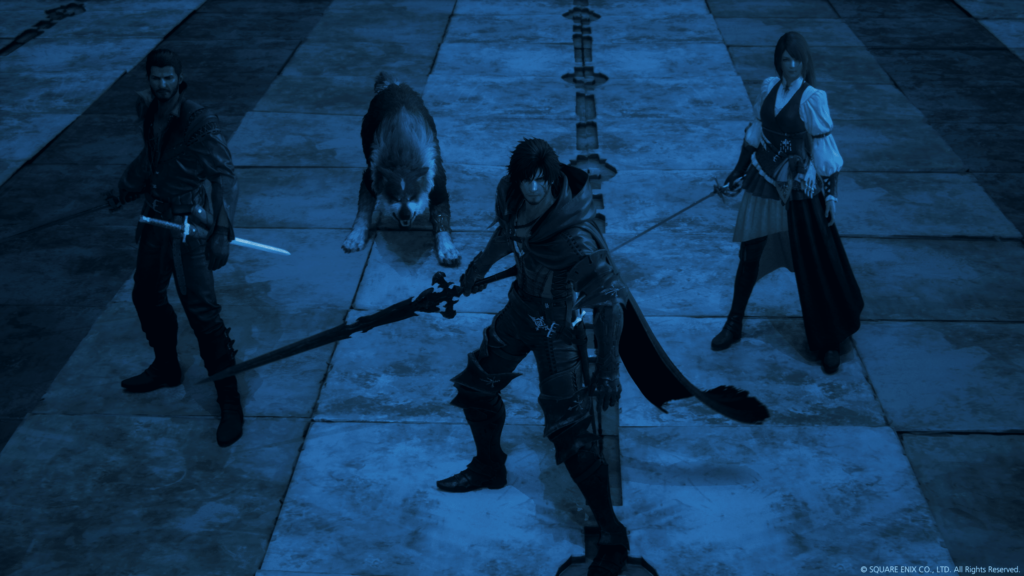
XV faced similar criticism when it initially released, with only Noctis playable – until later patches would see Noctis’s companions become far more fleshed out and directly controllable, and eventually had their own episodes of DLC. There is no hint of this being considered in XVI so far, so this seems to be a creative choice just to focus on Clive’s story. It remains to be seen what changes the XVI DLC might bring – but many hope that the DLC could provide more backstory for each of the Dominants and create opportunities to make them directly playable. It is challenging to balance depth of combat with a higher number of characters, but Final Fantasy VII Remake shows that it can be done.
Clive’s kit does come with access to one more superpower – the Goodest Boy in Final Fantasy – his dog, Torgal. In-keeping with the Game of Thrones comparisons, Torgal resembles a direwolf more than a dog. Clive is able to issue three basic commands to Torgal using the D-pad – sic, ravage, and heal. Sic and ravage both trigger minor amounts of damage, with ravage sending enemies into the air. Torgal is not meant to make an enormous impact on his own, but to add a layer of depth to what Clive can do by extending Clive’s combos and supporting aerial combat. It’s not going to tip the balance of any battles, and you can get away with not engaging with this mechanic at all, but it might help test the limits of high-score chasers in the coliseum area of the game.
One notable omission from battles is the lack of any sort of ‘status effects’. Many fans will know their own personal trauma of being caught against a surprise Malboro unleashing its “Bad Breath” attack and inflicting every status ailment available in the game, such as poison, blindness, petrification, berserk, slow, and anything else that might handicap you. XVI goes in the complete opposite direction and removes buffs and debuffs of any kind. Additionally, despite clear elemental affinities for each Eikon, these play no part in combat – so, your fire-based attacks do as much damage to frosty enemies as your ice-based attacks do.
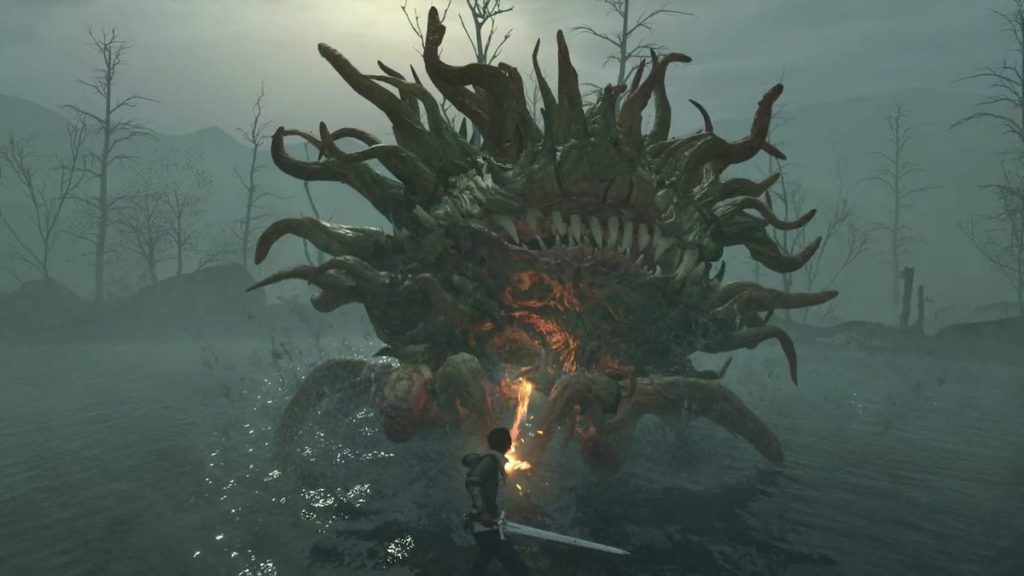
The developers openly tried to appeal to veteran turn-based fans of the series, and make the game as accessible as possible to those who perhaps don’t enjoy or excel in action combat games, by giving players optional accessories that automated and simplified some elements of combat, like dodging and issuing commands to Torgal. It is easy to understand how elements and statuses might have brought a level of intricacy the developers wanted to avoid with their flashy new action combat sequences, compared to the level of enjoyment they might add. At the same time, it does feel like staple elements of combat have been needlessly gutted.
Perhaps adding a function to toggle some of these mechanics on or off, or additional accessories to minimise the impact of statuses and elements, might have been a helpful compromise. In a game some consider to be too easy, this would have helped players feel that there was a higher degree of challenge and strategy to those who criticised XVI for simple hack-and-slash gameplay.
Master Craftsmanship
A significant proportion of the criticism levelled towards XVI was around so-called RPG elements – namely, a lack of freedom or depth to Clive’s weapons, inventory, and abilities.
In terms of crafting and equipment, Clive does have a relatively basic pipeline here. He can only equip swords as his weapon, belts and vambraces for armour, and up to three accessories, the latter of which can trigger various effects like increased gil and experience, or reduced cooldowns for abilities. Upgrading gear is a simple exercise in finding enough resources around the world to upgrade them to the next level. There is only one ‘best equipment’ up to a point, as your cap is limited by key items dropped by story bosses, so there isn’t much room to overpower or stumble upon a secret weapon that carries you to the end.
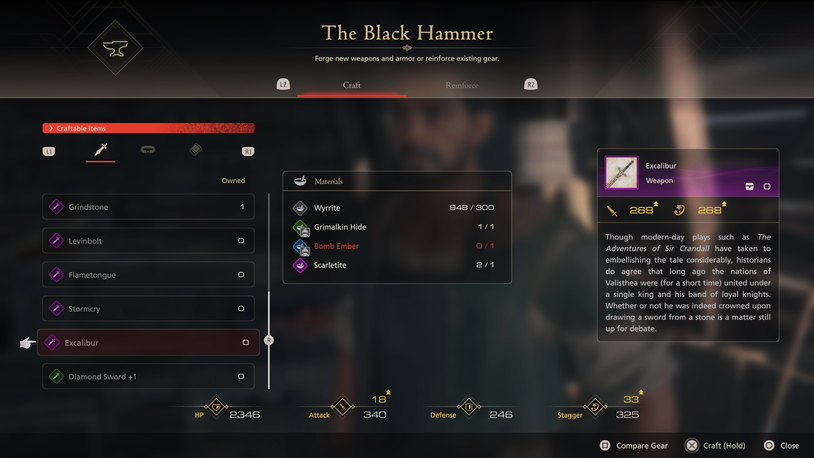
While this is a simple concept by today’s standards, this is not necessarily out of step with the series. None of first seven mainline titles had any sort of crafting at all – all weapons and armour were replaced by something stronger in the next town or dungeon. VIII was the first to introduce a ‘crafting’ element to its weapons, involving seeking out rare monster loot to create the best weapons and magic, but benefits were minimal, as stats were largely influenced by your magic level. IX did introduce a synthesis mechanic for weapons and armour, but only combined existing inventory into slightly rarer gear you would like find later on. X was the first to allow a significant degree of customisation with the abilities attached to weapons and armour. This was gone entirely from XII, while XIII and XV only increased weapon rank in a similar way XVI did. The online entries are their own thing, but MMOs by nature tend to throw out old gear and find stronger versions in the next dungeon (though there are crafting-based classes to lose hours to, if that’s your bag). I would therefore make the point that crafting has never been something that has really been present in the single-player experience to date – and the lack of an interesting crafting mechanic does not hold this entry back.
Similarly, some view Clive’s progression mechanics as too simplistic – he gains marginal stat increases with levels and equipment, can only slightly increase the power of his Eikonic abilities, and he only has one role to play. Again, however, the series has had a variable approach to the level of flexibility and character progression over the years. VII and VIII are considered some of the best titles, but there is almost no distinction between characters in battle besides their signature weapons and limit breaks – any character can fulfil any role.
Other entries have bounced between ‘Job Systems’ and more defined roles for named characters. Job systems have traditionally allowed for a very high degree of customisation and often appeal to players who want full control over their party, but they tend to sacrifice some congruence with the character development. For example, Garnet and Yuna couldn’t be anything other than White Mages/Summoners, whereas all of the party in I and III had no backstory at all until future remakes. Allowing Garnet to become a Dragoon, Rydia be a Monk, or have Yuna hopping around with a pair of pistols (…) would not have been congruent with what we knew about them. To date, save for the re-released version of XII: International Zodiac Job System, there hasn’t really been an example in the mainline series of a Job System and high degree of character development in the same game. In this regard, XVI’s strong focus on narrative fits better with Clive having limited customisation – but there could have been more flexibility and progression with the tools we were given.
Every Nook and Cranny
While characters and world development were unashamedly at the forefront of every inch of XVI, the area mostly heavily criticised was its side-content.
Sidequests in XVI are, in my view, no different to the vast majority of RPGs I’ve played. Almost every modern RPG’s sidequests are formulaic. In this, XVI does it by the book – all sidequests are given by NPCs in your bases, they all result in a reward after killing a few monsters, and you can track everything in a tidy little list in your journal. The rewards themselves are fairly uninteresting – almost always gil and some materials for the aforementioned basic crafting system.
Critics say that these are repetitive, dull, and lack incentive. In my first play through of the game, I certainly didn’t feel that way, as I was far more focused on learning more about the world – and the sidequests are a successful vehicle for significantly fleshing out the world and characters. The level of care and detail apparent in making even minor characters feel fully considered is to be commended. On rare occasions, I did find some particular themes being underlined a few too many times, but it fit with the overall aim to make this one of the best stories told in the series. It was only on my second play through, in pursuit of my next Platinum Trophy, that I found myself avoiding any non-essential sidequests – I had the story fresh in my mind, and I had nothing to gain from doing them again.
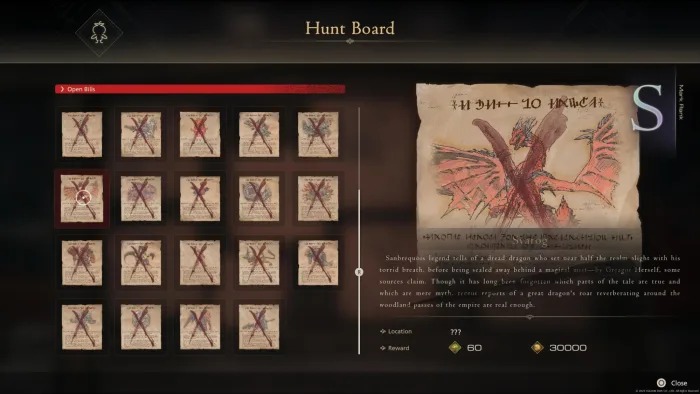
Another related criticism is that the game followed a relatively linear story and only gave the illusion of player freedom through its large open zones for each major kingdom. This is a deliberate, creative choice in a narrative-led RPG, and one that is not out of step with the series as a whole. This is not a unique criticism in the series, and was most recently levelled at XIII, while XV’s large open world was blasted for being vast and empty – so this has always been a difficult balance to strike.
It is notable that earlier entries never really faced cries of linearity, and I think they were protected from this by the classic World Map, which helped foster and illusion of freedom and openness that was never truly there – at least, not in the way we’d describe open world games now. IX, for example, gives you the World Map within the first hours of the game, but the narrative actually keeps you almost entirely on rails until well into the third disc when the airship is acquired.
XIII faced such fervent criticism for this because the map was always a thin corridor with an occasional dead-end branch with a predictable piece of loot, requiring you to just double-back before approaching the next boss. It wasn’t really that much more linear, but the map changed our perception. In contrast, X was just as linear as XIII, but the way in which its story was told meant that few players questioned or protested why the party had to be in a particular area in a particular order. Favouring openness over linearity can be irrelevant when the player is satisfied that the narrative requires, and benefits from, a linear experience. For any flaws XVI may have, its story and narrative were not among them, and the way the world opened up felt congruent to the story.
In defence of XVI’s approach to sidequests, I would argue two further points. The first is that the criticism is rooted in the fact that, actually, nobody really likes modern sidequests – and people do look past it when they want to. Beloved by all, even IX’s sidequests are almost entirely centred on grinding the monotonous Chocobo Hot & Cold mini-game. Despite being incredibly popular and profitable, XIV’s MMO nature means it is absolutely riddled with basic ‘fetch quests’ that rarely add any significance beyond a few experience points. Bemoaning this element of “critically-acclaimed MMO Final Fantasy XIV” will prompt essays on one of the best stories in the series to date, and encouragements to look past the bad to focus on the good. The same could, and should, be said for XVI.
The second is that I think people aren’t really upset about sidequests so much as they are about a missing element of discovery in XVI.
While players may struggle to pin down what makes a good Final Fantasy, most can agree on what makes a good RPG, and the very best have a high degree of freedom, incentivise exploration, and reward those who seek out its secrets. Older Final Fantasies did this well – there are almost no obvious markers on the map telling you where to go, how or when to trigger a sidequest, and there were myriad caves, secrets, hidden dialogue, and difficult bosses to discover.
XVI, however, has almost none of this. Its large ‘zones’ allow you to explore a lot of ground, but there is almost no incentive to do so, as it is only filled with minor loot and further hordes of the same enemies you can encounter on the main path. There are no unique or powerful weapons to discover in hidden chests. There are no secret bosses, and any powerful fights are diligently listed on the Hunt board in your base, which tended to be jacked-up reskinned versions of enemies you had encountered before. There are no hidden areas on the map to discover for yourself. And none of the story-heavy sidequests give you anything worth collecting beyond key items needed to squeeze marginal improvements from your upgraded gear to scale with the enemy’s strength. By the final third of the game, I found that I had an excess of literally hundreds of some of the basic and mid-tier loot, and there was absolutely nothing to do with it once I had upgraded my gear to the next cap. You could sell it, but there wasn’t much to spend it on besides tracks for the jukebox.
Beating High Scores
Bringing the world to life in a Final Fantasy is no simple task, but one of the staple elements in making an unforgettable game has always been its music. Composer Masayoshi Soken has gained a loyal following for his work in XIV, composing literally hundreds of tracks for the MMO over the years. With XVI, he had the opportunity to start from scratch instead of building on an ongoing project. Soken delivered some unforgettable pieces, earning numerous nominations and awards this season for its soundtrack. Battles and big moments for Clive are accompanied by colossal orchestral dramas, which drive home some of the more epic experiences the combat and story hopes to provide, and a handful of these have earned their spot in my heavy rotation playlists.
The series boasts countless tracks and arrangements for most of its games soundtracks. One of the best things about its discography is that the music has tended to take on a life of its own. Most veterans will be able to hum along to VII’s “Cosmo Canyon”, IV’s “Black Mage Village” or X’s “Thunder Plains”. The locations always felt alive and unique – and the music has helped to give each its own identity.
In XVI’s case, this is where there is a notable difference. The soundtrack is entirely appropriate to the game – but, as someone whose Spotify Wrapped reveals he is in the top 1% of Nobuo Uematsu fans, I am unable to recall any themes from XVI that aren’t the big battle themes. Most locations have forgettable backing tracks and none have any unique themes to distinguish the many similar-looking settlements in different kingdoms. The jukebox feature lets you revisit what are presumably considered the best tracks in the game, but I found myself uninterested in the majority. A part of this will be because I have listened to the other soundtracks for many years, and we have only had XVI for half a year. Still, I struggle to imagine Distant Worlds ever playing more than “Find the Flame” or “To Sail the Forbidden Seas” – and while that shouldn’t be the guiding creative principle, it does reflect a diminished staying power in this soundtrack compared to past entries.
A Critical Hit?
At the time of writing, XVI currently has a Metacritic rating of 87, placing it firmly amongst near unanimously-praised titles. For some comparisons, it has the same rating as Final Fantasy VII Remake, Bloodborne, and Insomniac’s Spider-Man; it is only one point behind The Last of Us Part II, NieR: Automata, and X-Com 2; and is one point ahead of Microsoft’s flagship Starfield, BAFTA-winning Returnal, and fan-favourite Dragon Quest XI: Echoes of an Elusive Age.
Despite this, it doesn’t take long to find endless internet comments arguing that it is boring, listing all of the ways it fails to be a real Final Fantasy, or doom-mongering over Square-Enix’s future based on sales figures. A paywalled article in Bloomberg first reported that Square-Enix had lost over $2bn in value after the release of XVI, but the actual report suggests the company was losing money because of a string of lack-lustre releases, such as the bitterly disappointing Forspoken earlier in 2023.
Since release, Final Fantasy XVI’s sales figures have been slightly opaque. Square-Enix posted the first-week sales figures back in June, hitting an impressive 3 million copies sold. Naturally, comparisons were made with other entries in the franchise. Despite its mixed reception and fumbled multimedia content, XV still holds the record for the fastest-selling game in the series, at over 5 million copies shipped at Day One. Final Fantasy VII Remake reportedly sold over 3.5 million units in its first week.
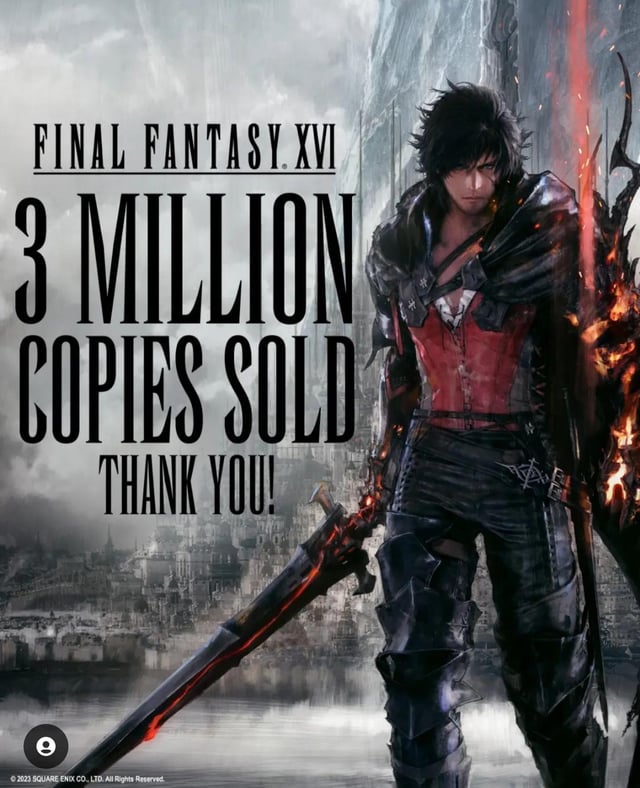
At first glance, you might conclude that XVI performed poorly compared to its most recent comparable peers, but this does not tell the full story. XV was sold on Xbox simultaneously, and both XV and VIIR released on the PS4, which had a much higher player install base than XVI has had on the PS5. In other words, the number of people with a PS5 who could play XVI was already much lower than the number of people with a PS4 who could have played XV or VIIR. It could therefore be argued that XVI attracted a higher proportion of players with access to the game than its peers. Popular Final Fantasy content creator FFUnion discusses this and the purchasing habits of players around the world on different consoles in great detail, giving much-needed context to the figures – with the conclusion being that sales are essentially fine.
Square-Enix did defend the ‘extremely strong’ sales, but later backtracked, citing poor PS5 sales for its disappointing performance. We still have no idea how it has performed since its first week. With a PC port and DLC on the way, and a promise for Square-Enix to ‘partner closely’ with Xbox going forward, XVI will inevitably get a boost fairly soon – but Square-Enix’s financial reports will be an interesting read next year.
Final Thoughts
With all of this said, where does XVI rate in the long-running franchise?
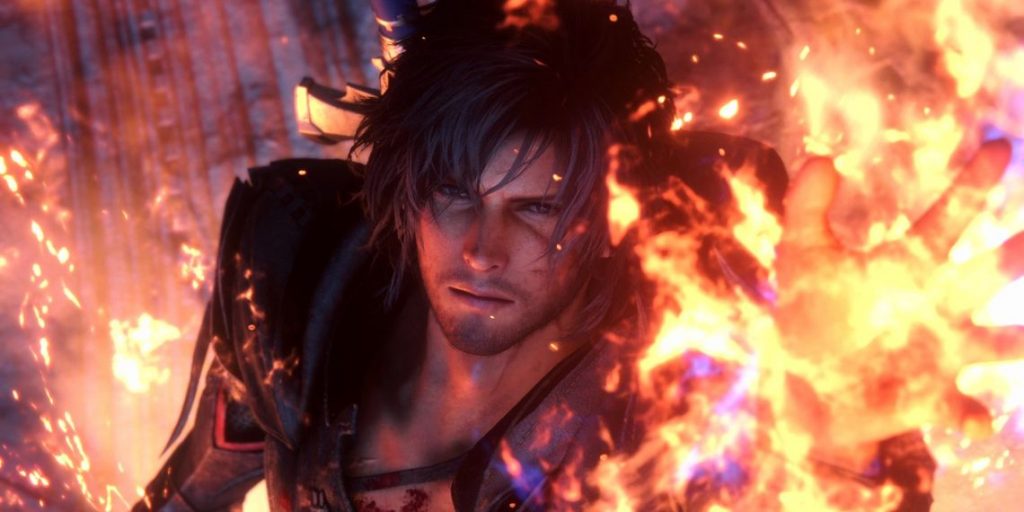
Perhaps the best insight comes from Clive himself. Ben Starr was recently interviewed on the Dev Diary podcast and, in answer to a question about the ‘best’ Final Fantasy, he makes a compelling case that our system of rating games is fundamentally flawed. He talks about how what we are really rating is our relationship with that game and not always the objective elements of the game; we talk about how the games make us feel, where we get those hits of endorphins, and the element of discovery. As we all get older and play more fantastic games, we continue to chase a feeling that we can never recapture.
This is particularly relevant in a series like Final Fantasy, which has been running for so many years, with so many identities and changes, and people coming in at very different points in their lives. Everyone has their first Final Fantasy, and nothing will ever recreate the feelings we had when playing it. I have specifically reviewed XVI through the lens of a long-time fan, whose many first and best gaming experiences were in the PS1 era. I acknowledge that my perception, and wish for XVI to succeed, is inexorably tied to my love of the franchise. We all have a different relationship with the series and want something different from the next entry, as we are all chasing the feeling we had when we first discovered it.
Final Fantasy XVI has sold, and been received, objectively quite well. Its story, characters, combat and visuals were outstanding. Though some of the more classic RPG elements felt undercooked in its new action-oriented flavour, its overall high quality presentation has rightfully earned its place in Square-Enix’s Hall of Fame.
Is this the best Final Fantasy in the series? Well, that depends entirely on you. Either way, the bar will be set high for the inevitable Final Fantasy XVII.
| Criteria | Scores | Our Score |
|---|---|---|
| Storyline | 1-5 | 5 |
| Gameplay | 1-5 | 3 |
| Value/Cost | 1-5 | 4 |
| Controls | 1-5 | 5 |
| Length | 1-5 | 4 |


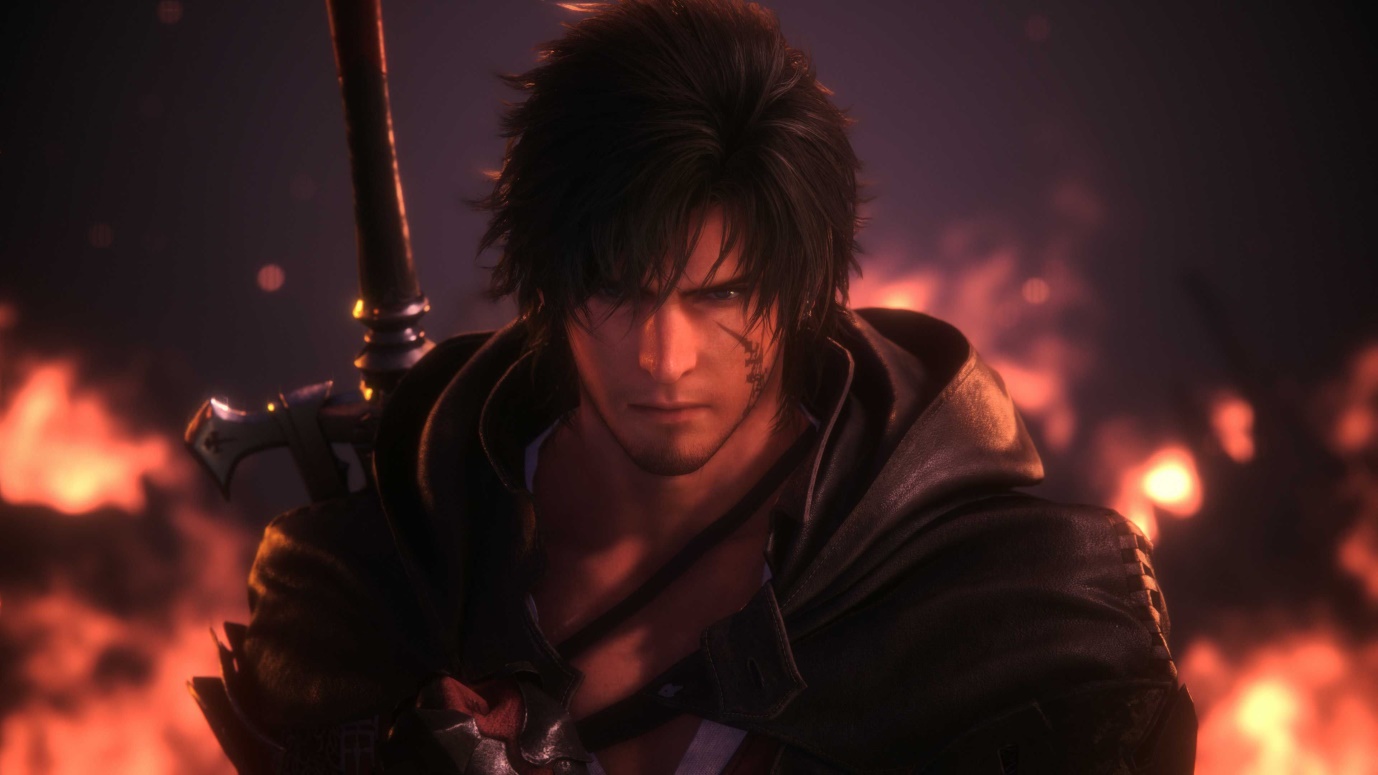
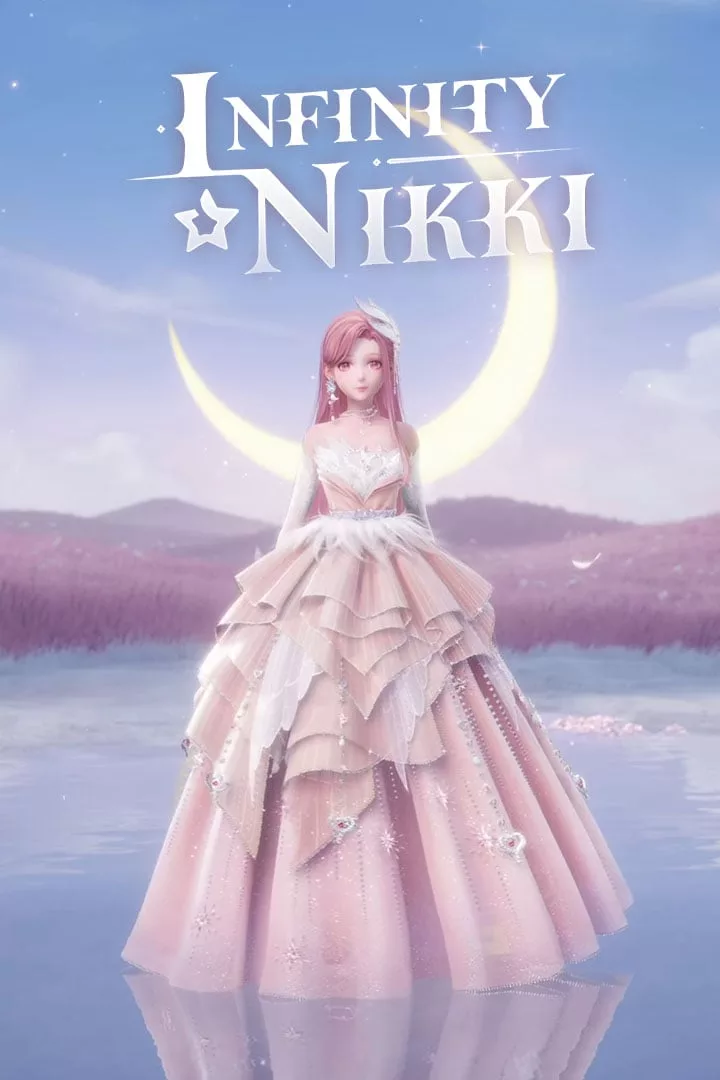
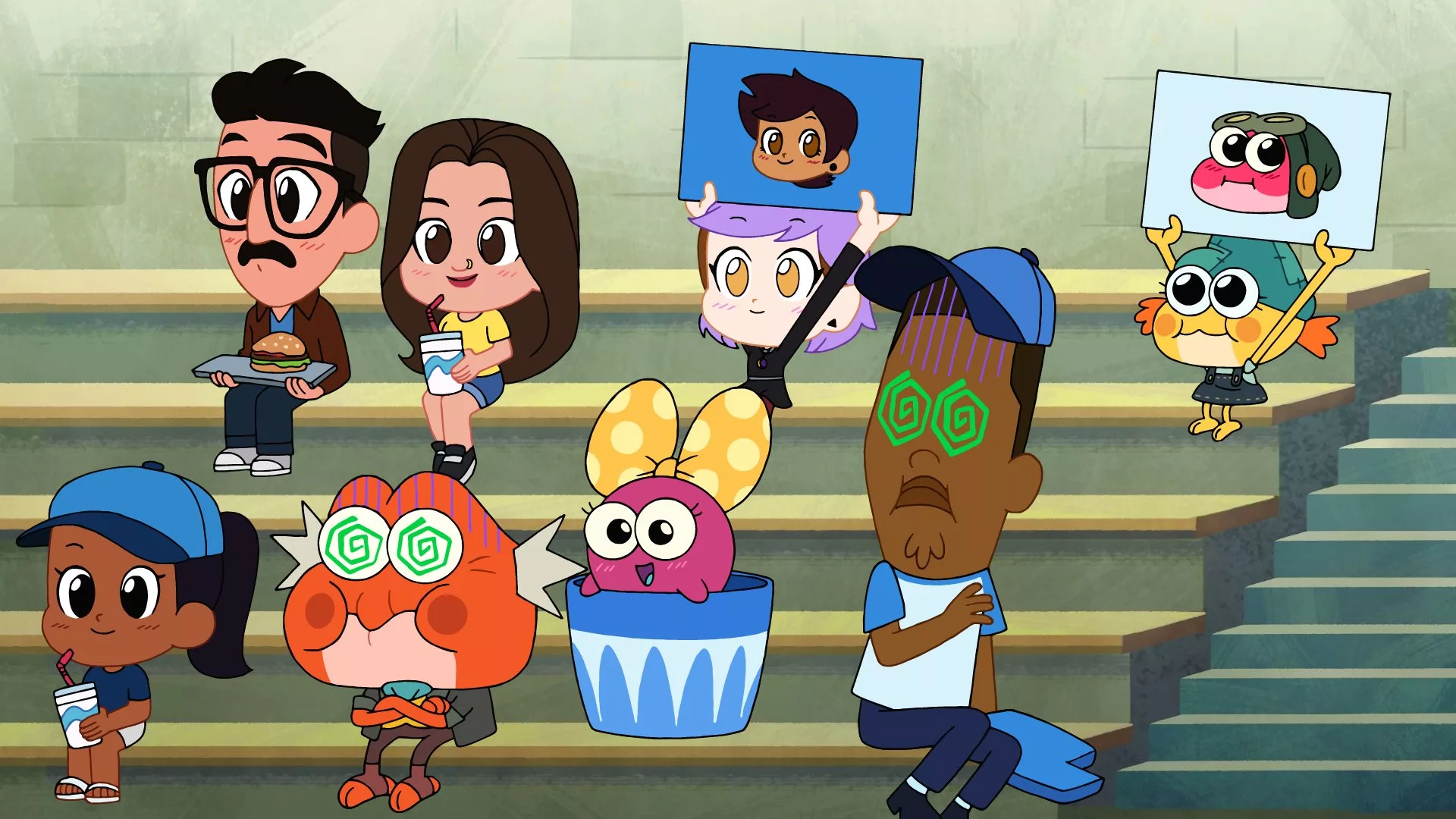


One thought on “Review: Final Fantasy XVI”